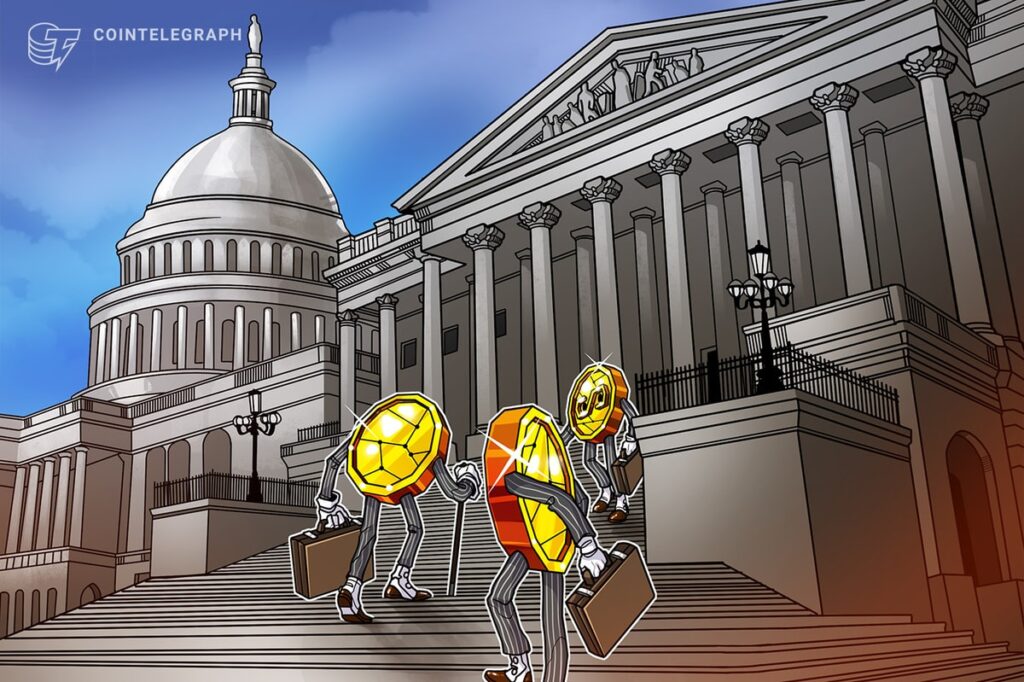Stablecoin adoption amongst United States banks and monetary establishments could speed up following the passage of latest laws within the Senate.
The Guiding and Establishing Nationwide Innovation for US Stablecoins, or GENIUS Act handed the US Senate in a 68–30 Tuesday vote, Cointelegraph reported. The invoice goals to set clear guidelines for stablecoin collateralization and mandate compliance with Anti-Money Laundering legal guidelines. It should now advance to the Home.
The Senate vote sends a “robust constructive sign to establishments” that brings the invoice one step nearer to turning into regulation, in accordance with Katalin Tischhauser, head of funding analysis at digital asset financial institution Sygnum.
Quite a few massive banks and conventional monetary establishments are planning stablecoin integrations for funds and settlements, Tischhauser advised Cointelegraph, including:
“Clear regulatory frameworks and compliance pathways are a necessity, as is authorized recognition of stablecoins as settlement devices.”
Nevertheless, she stated that institutional stablecoin use could initially be restricted to tokens issued on non-public blockchains.
Rising crypto coverage developments and stablecoin laws are vital catalysts to the 2025 crypto market cycle, Alice Li, funding associate and head of US at crypto enterprise capital agency Foresight Ventures, advised Cointelegraph during the Chain Response X Areas present on June 3.
“One of many strongest drivers is certainly the coverage change,” she stated, referencing US President Donald Trump’s Bitcoin reserve approval and stablecoin coverage developments as the principle catalysts for Bitcoin (BTC) value upside in 2025.
Associated: Stablecoin legislation to drive Bitcoin market cycle in 2025: Finance Redefined
GENIUS Act makes stablecoin issuers “key gamers”
Full congressional approval of the GENIUS Act will make stablecoins “a part of US monetary infrastructure,” stated Andrei Grachev, managing associate at Falcon Finance and DWF Labs.
“If issuers begin holding massive quantities of Treasurys, that modifications their position from area of interest devices to key gamers within the economic system,” Grachev stated.
He added that treasury-backed stablecoins would give establishments extra confidence in utilizing them for settlements and funds.
Associated: Jack Ma’s Ant International eyes stablecoin licenses in Singapore, Hong Kong
Monetary establishments utilizing stablecoins have been “working below a regulatory grey space, with few concrete strikes being made as a consequence of lack of readability and authorities steering,” in accordance with Alex Buelau, co-founder of Rayls, the blockchain for banks working with JP Morgan’s Kinexys blockchain infrastructure answer.
“Now that that is executed, establishments gained’t hesitate to leap, capitalizing on the alternatives that stablecoins have to supply, notably on the subject of cross-border funds, 24/7 settlements and enhancing world, onchain liquidity,” Buelau advised Cointelegraph.
On June 15, funding banking large JPMorgan Chase filed a brand new US trademark utility for “JPMD,” amplifying hypothesis of a stablecoin providing.
The submitting listed companies together with digital asset buying and selling, transfers, alternate, clearing and cost processing.
Journal: Older investors are risking everything for a crypto-funded retirement
